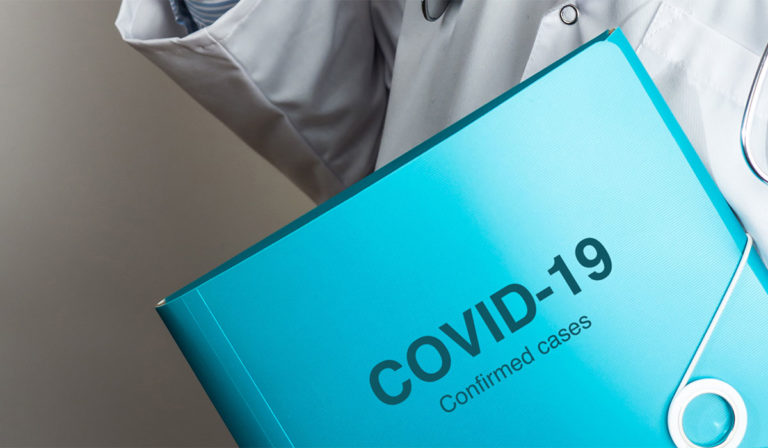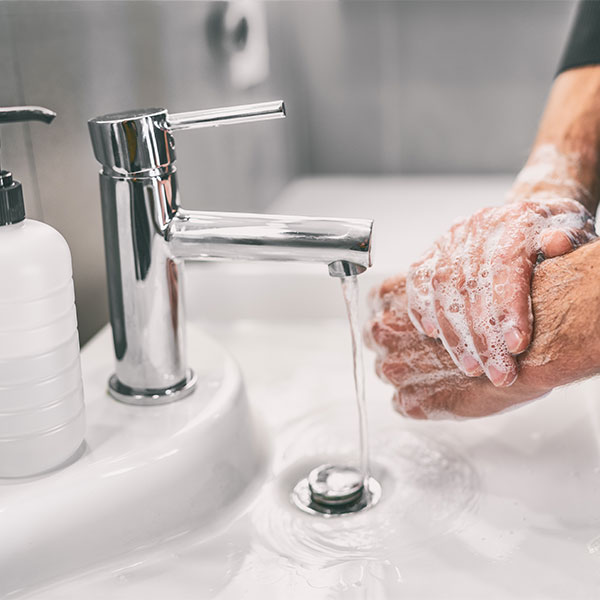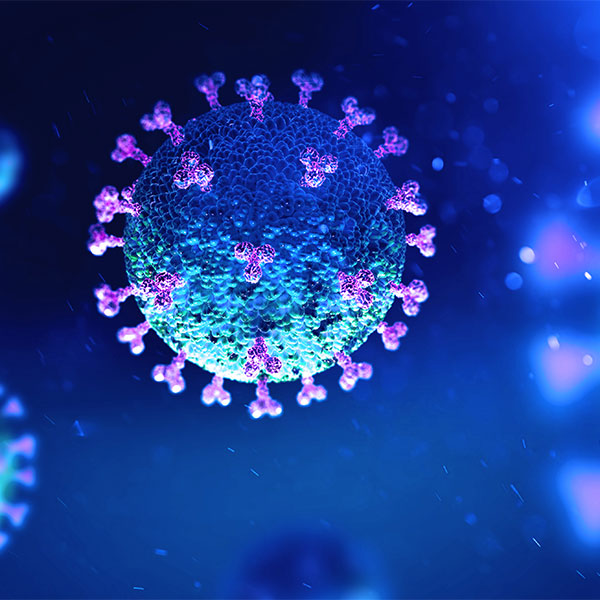
Prepare to Implement Basic Infection Prevention Measures
For most employers, protecting workers will depend on emphasizing basic infection prevention measures. As appropriate, all employers should implement good hygiene and infection control practices, including:
- Promote frequent and thorough hand washing, including by providing workers, customers, and worksite visitors with a place to wash their hands. If soap and running water are not immediately available, provide alcohol-based hand rubs containing at least 60% alcohol.
- Encourage workers to stay home if they are sick.
- Encourage respiratory etiquette, including covering coughs and sneezes.
- Provide customers and the public with tissues and trash receptacles.
- Employers should explore whether they can establish policies and practices, such as flexible worksites (e.g., telecommuting) and flexible work hours (e.g., staggered shifts), to increase the physical distance among employees and between employees and others if state and local health authorities recommend the use of social distancing strategies.
- Discourage workers from using other workers’ phones, desks, offices, or other work tools and equipment, when possible.
- Maintain regular housekeeping practices, including routine cleaning and disinfecting of surfaces, equipment, and other elements of the work environment. When choosing cleaning chemicals, employers should consult information on Environmental Protection Agency (EPA)-approved disinfectant labels with claims against emerging viral pathogens. Products with EPA-approved emerging viral pathogens claims are expected to be effective against SARS-CoV-2 based on data for harder to kill viruses. Follow the manufacturer’s instructions for use of all cleaning and disinfection products (e.g., concentration, application method and contact time, PPE).
Develop Policies and Procedures for Prompt Identification and Isolation of Sick People, if Appropriate
- Prompt identification and isolation of potentially infectious individuals is a critical step in protecting workers, customers, visitors, and others at a worksite.
- Employers should inform and encourage employees to self-monitor for signs and symptoms of COVID-19 if they suspect possible exposure.
- Employers should develop policies and procedures for employees to report when they are sick or experiencing symptoms of COVID-19.
Safe Work Practices
Safe work practices are types of administrative controls that include procedures for safe and proper work used to reduce the duration, frequency, or intensity of exposure to a hazard. Examples of safe work practices for SARS-CoV-2 include:
- Providing resources and a work environment that promotes personal hygiene. For example, provide tissues, no-touch trash cans, hand soap, alcohol-based hand rubs containing at least 60 percent alcohol, disinfectants, and disposable towels for workers to clean their work surfaces.
- Requiring regular hand washing or using of alcohol-based hand rubs. Workers should always wash hands when they are visibly soiled and after removing any PPE.
- Post handwashing signs in restrooms.
Personal Protective Equipment (PPE)
While engineering and administrative controls are considered more effective in minimizing exposure to SARS-CoV-2, PPE may also be needed to prevent certain exposures. While correctly using PPE can help prevent some exposures, it should not take the place of other prevention strategies.
Examples of PPE include gloves, goggles, face shields, face masks, and respiratory protection, when appropriate. During an outbreak of an infectious disease, such as COVID-19, recommendations for PPE specific to occupations or job tasks may change depending on geographic location, updated risk assessments for workers, and information on PPE effectiveness in preventing the spread of COVID-19. Employers should check the OSHA and CDC websites regularly for updates about recommended PPE.
All types of PPE must be:
- Selected based upon the hazard to the worker.
- Properly fitted and periodically refitted, as applicable (e.g., respirators).
- Consistently and properly worn when required.
- Regularly inspected, maintained, and replaced, as necessary.
- Properly removed, cleaned, and stored or disposed of, as applicable, to avoid contamination of self, others, or the environment.
Employers are obligated to provide their workers with PPE needed to keep them safe while performing their jobs. The types of PPE required during a COVID-19 outbreak will be based on the risk of being infected with SARS-CoV-2 while working and job tasks that may lead to exposure.
Workers, including those who work within six feet of patients known to be, or suspected of being, infected with SARS-CoV-2 and those performing aerosol-generating procedures, need to use respirators:
- National Institute for Occupational Safety and Health (NIOSH)-approved, N95 filtering facepiece respirators or better must be used in the context of a comprehensive, written respiratory protection program that includes fit-testing, training, and medical exams. See OSHA’s Respiratory Protection standard, 29 CFR 1910.134.
- When disposable N95 filtering facepiece respirators are not available, consider using other respirators that provide greater protection and improve worker comfort. Other types of acceptable respirators include a R/P95, N/R/P99, or N/R/P100 filtering facepiece respirator; an air-purifying elastomeric (e.g., half-face or full-face) respirator with appropriate filters or cartridges; powered air purifying respirator (PAPR) with high-efficiency particulate arrestance (HEPA) filter; or supplied air respirator (SAR). See CDC/ NIOSH guidance for optimizing respirator supplies.
- Consider using PAPRs or SARs, which are more protective than filtering facepiece respirators, for any work operations or procedures likely to generate aerosols (e.g., cough induction procedures, some dental procedures, invasive specimen collection, blowing out pipettes, shaking or vortexing tubes, filling a syringe, centrifugation).
- Use a surgical N95 respirator when both respiratory protection and resistance to blood and body fluids is needed.
- Face shields may also be worn on top of a respirator to prevent bulk contamination of the respirator. Certain respirator designs with forward protrusions (duckbill style) may be difficult to properly wear under a face shield. Ensure that the face shield does not prevent airflow through the respirator.
- Consider factors such as function, fit, ability to decontaminate, disposal, and cost. OSHA’s Respiratory Protection eTool provides basic information on respirators such as medical requirements, maintenance and care, fit testing, written respiratory protection programs, and voluntary use of respirators, which employers may also find beneficial in training workers at. Also see NIOSH respirator guidance.
- Respirator training should address selection, use (including donning and doffing), proper disposal or disinfection, inspection for damage, maintenance, and the limitations of respiratory protection equipment. Learn more at
http://www.osha.gov/SLTC/respiratoryprotection.
- The appropriate form of respirator will depend on the type of exposure and on the transmission pattern of COVID-19. See the NIOSH “Respirator Selection Logic” or the OSHA “Respiratory Protection eTool.”
Information from OSHA’s publication “Guidance on Preparing Workplaces for COVID-19”
Containing the Spread of COVID-19
As with anything new, we are still learning about how the virus spreads and the severity of illness it causes.
The following information is from the CDC update June 16.
COVID-19 is thought to spread mainly through close contact from person-to-person. Some people without symptoms may be able to spread the virus. In general, the more closely a person interacts with others and the longer that interaction, the higher the risk of COVID-19 spread.
Person-to-Person Spread
The virus is thought to spread mainly from person-to-person:
- Between people who are in close contact with one another (within about 6 feet).
- Through respiratory droplets produced when an infected person coughs, sneezes, or talks.
- These droplets can land in the mouths or noses of people who are nearby or possibly be inhaled into the lungs.
- COVID-19 may be spread by people who are not showing symptoms.
The Virus May Be Spread in Other Ways
It may be possible that a person can get COVID-19 by touching a surface or object that has the virus on it and then touching their own mouth, nose, or possibly their eyes. This is not thought to be the main way the virus spreads, but we are still learning more about how this virus spreads.
Spread between Animals and People
- At this time, the risk of COVID-19 spreading from animals to people is considered to be low. Learn about COVID-19 and pets and other animals.
- It appears that the virus that causes COVID-19 can spread from people to animals in some situations. CDC is aware of a small number of pets worldwide, including cats and dogs, reported to be infected with the virus that causes COVID-19, mostly after close contact with people with COVID-19. The CDC provides guidelines for pet owners.
Protect Yourself and Others
The best way to prevent illness is to avoid being exposed to this virus. You can take steps to slow the spread.
- Maintain good social distance (about 6 feet). This is very important in preventing the spread of COVID-19.
- Wash your hands often with soap and water. If soap and water are not available, use a hand sanitizer that contains at least 60% alcohol.
- Routinely clean and disinfect frequently touched surfaces.
- Cover your mouth and nose with a cloth face covering when around others.
Sources of Information & Assistance
The following are credible resources for information and assistance in response to the COVID-19 pandemic.
Arizona Department of Health Services: daily COVID-19 updates
The Arizona Poison Control System (now available to take COVID-19 calls from Arizona providers and the general public) 1-844-542-8201
Arizona Together: an initiative to help Arizona businesses, nonprofits and residents harmed by the COVID-19 outbreak.
Johns Hopkins University – COVID-19 facts, updates and tracking map
No related posts.















Speak Your Mind
You must be logged in to post a comment.